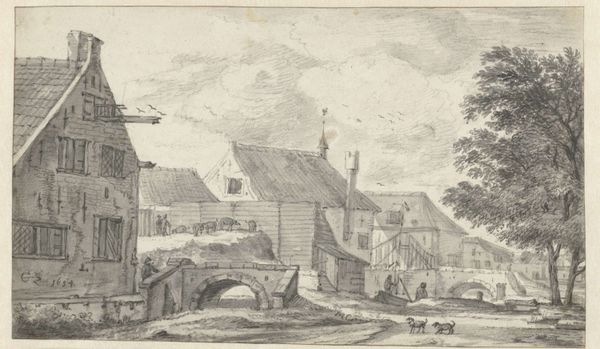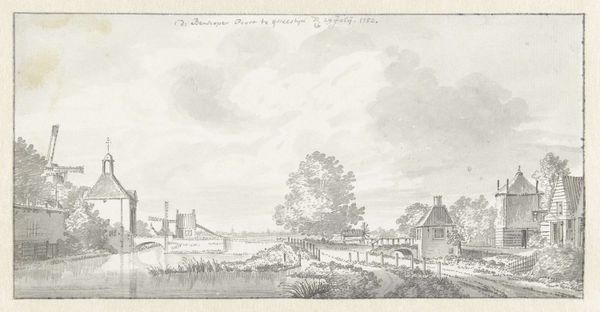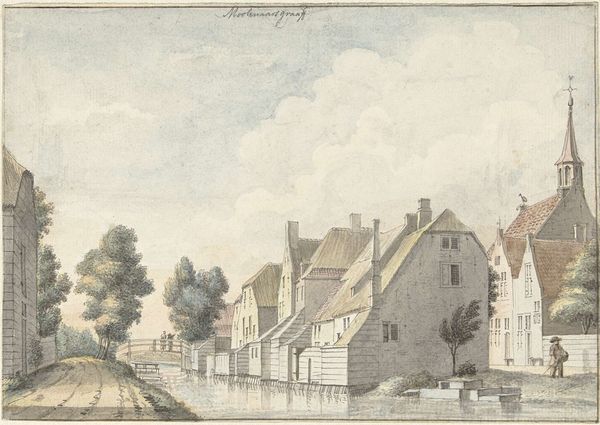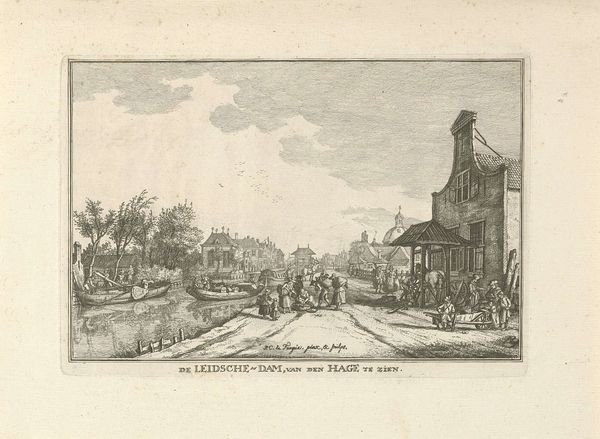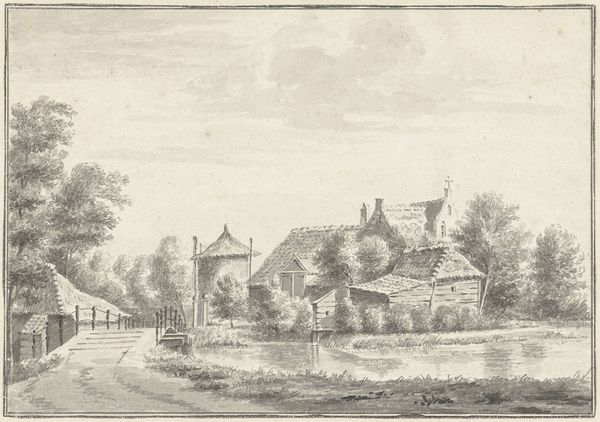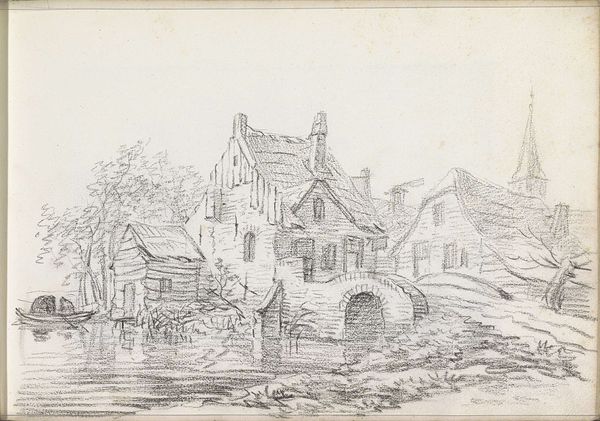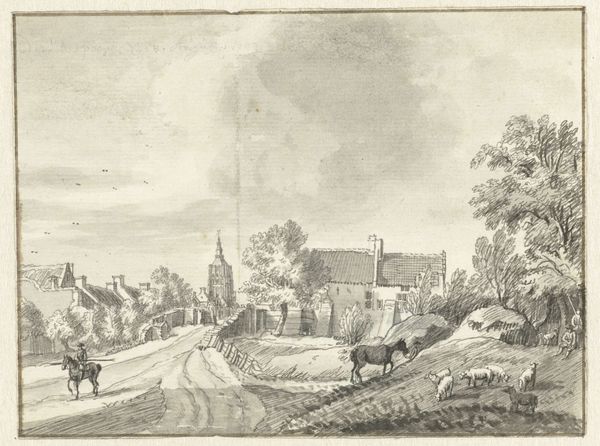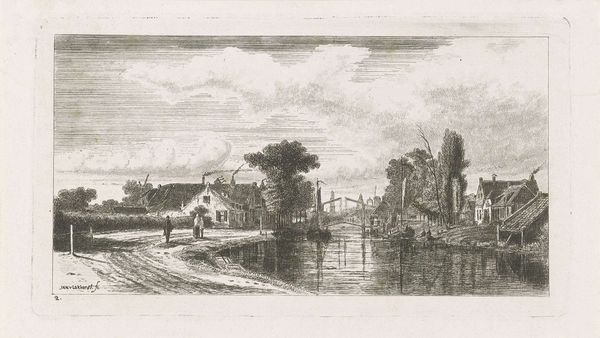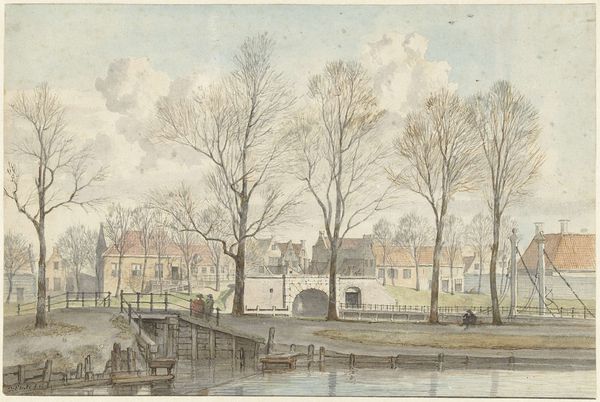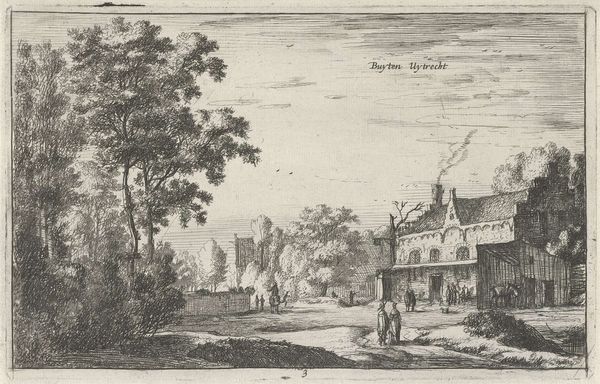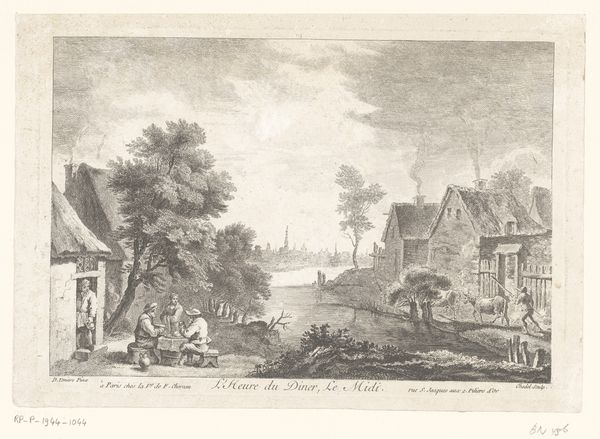
drawing, watercolor, pencil
#
drawing
#
dutch-golden-age
#
pencil sketch
#
landscape
#
watercolor
#
pencil
#
watercolor
Dimensions: height 204 mm, width 465 mm, width 178 mm, width 293 mm
Copyright: Rijks Museum: Open Domain
Curator: Let’s examine this intriguing piece attributed to Hendrik Spilman, likely created between 1775 and 1777, titled "De sluis te Spaarndam." It's currently held in the Rijksmuseum. The medium is listed as a combination of pencil and watercolor drawing. Editor: My immediate impression is one of subdued stillness. The limited palette creates a tranquil, almost melancholic mood. There is an emphasis on horizontal lines throughout. The forms are rendered with remarkable delicacy. Curator: Indeed, the drawing reveals a specific location—the Spaarndam lock—but Spilman isn’t merely documenting scenery; he’s capturing a place of labor and transportation. The lock itself suggests human intervention, controlling the flow of goods and people. Watercolors are also interesting, signaling accessibility and mass consumption compared to paintings. Editor: The atmospheric perspective achieved with the subtle washes of color is captivating. Observe how the forms gradually fade into the background, creating a sense of depth and distance. The architectural structures, such as the lock and the building, are sharply rendered, offering structural counterpoints. Curator: Let's not overlook the social aspect. The figures in the foreground, presumably workers and travelers, speak to the movement of people and materials—a society built upon trade. I would want to explore how this image participates in the visual language of Dutch national identity during a period of social and economic transformation. Editor: Yes, I note the narrative implied by the figures. Consider the lone horseman as he provides an immediate focal point that emphasizes depth, balanced against the activity on the river and at the lock. Also note how light seems to interact with materiality as an exercise in capturing atmospheric optics. Curator: Considering all this, what's most striking to me is how Spilman is less interested in glorifying nature than in illustrating its entanglement with human industry. This informs my sense that we must consider Spilman's work as it reflects larger processes in society and the economy. Editor: And yet, I see how Spilman, using refined lines and tonal modulations, demonstrates visual balance. It provides a lens for perceiving the sublime, which perhaps goes beyond mere industrial or national considerations. I depart with an increased attention for quiet brilliance.
Comments
No comments
Be the first to comment and join the conversation on the ultimate creative platform.
